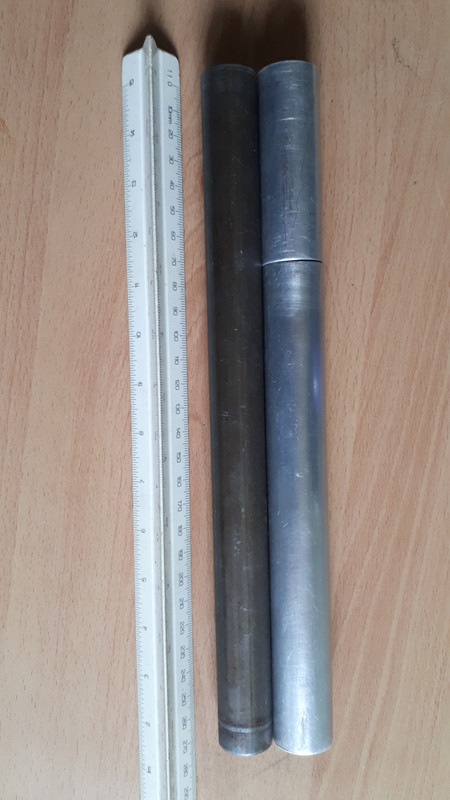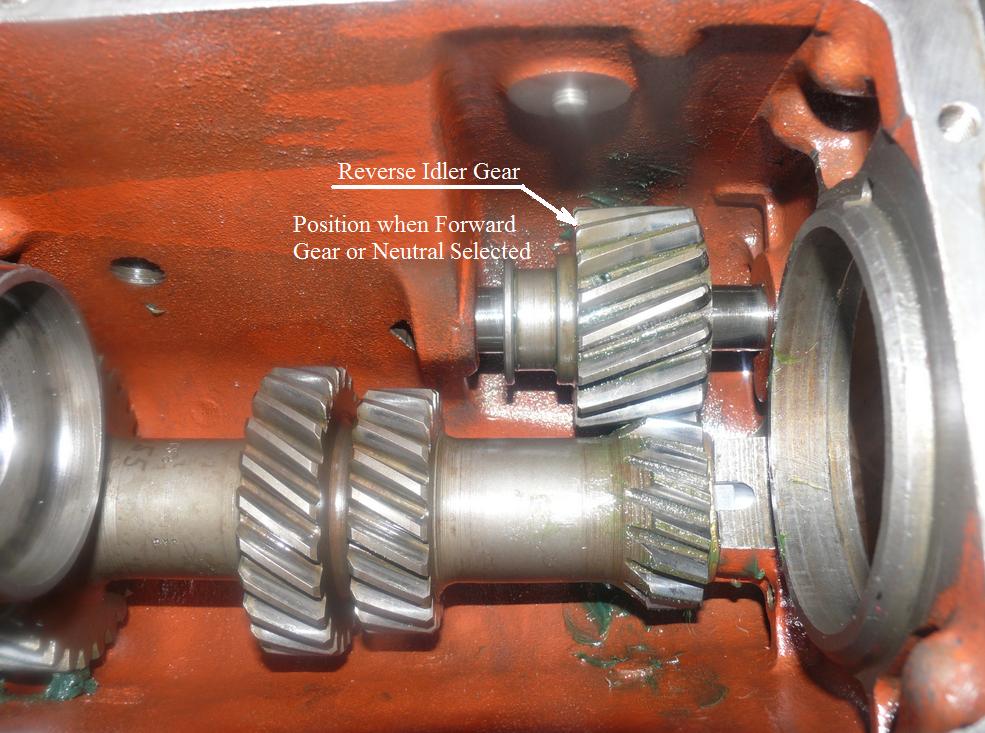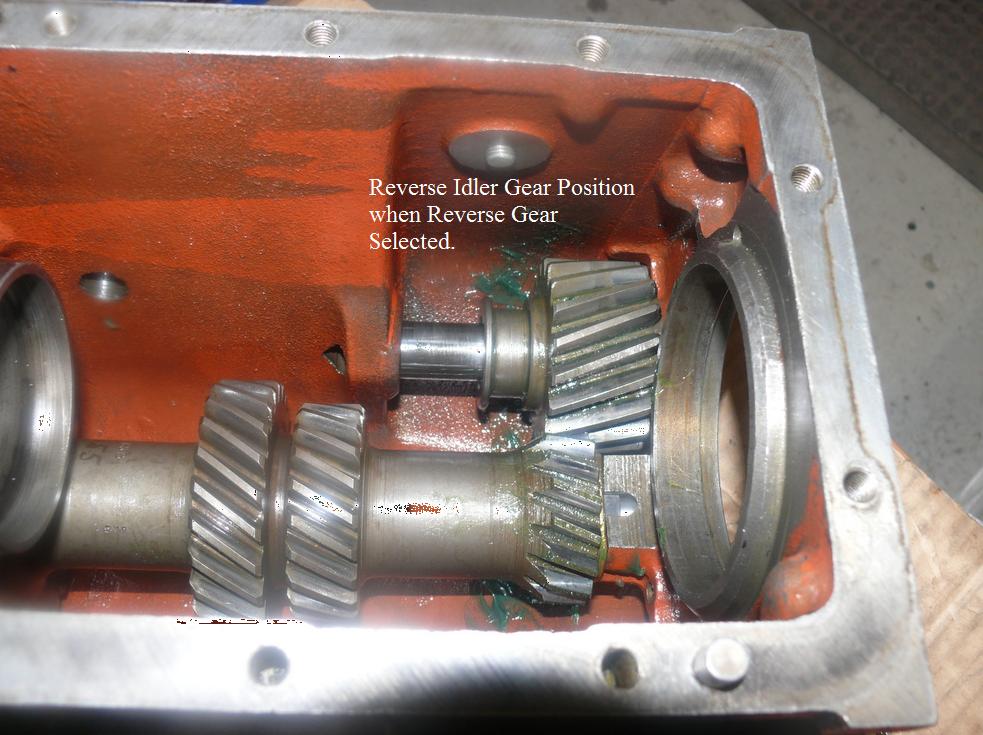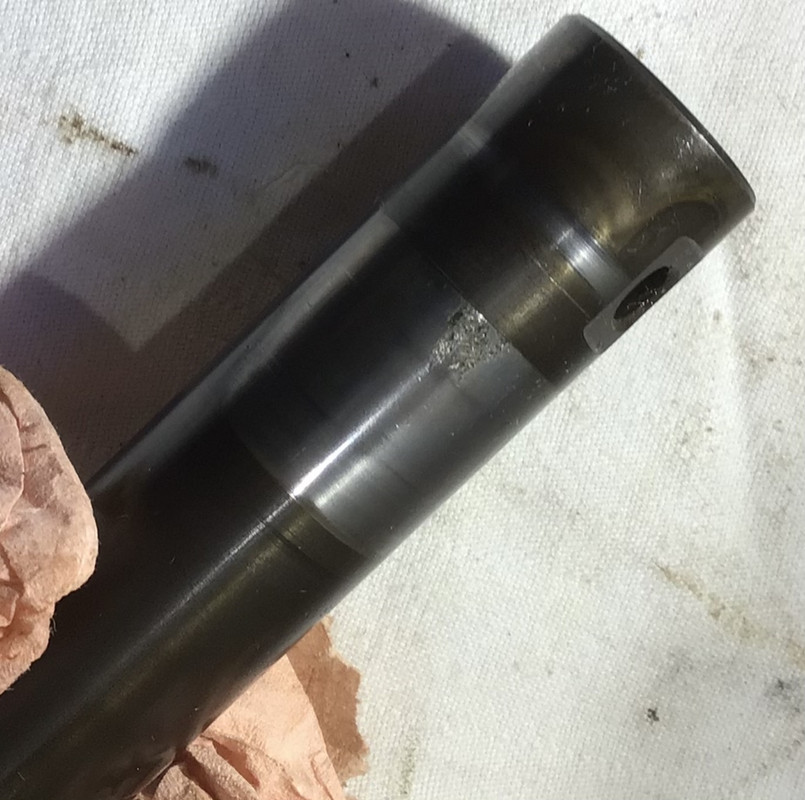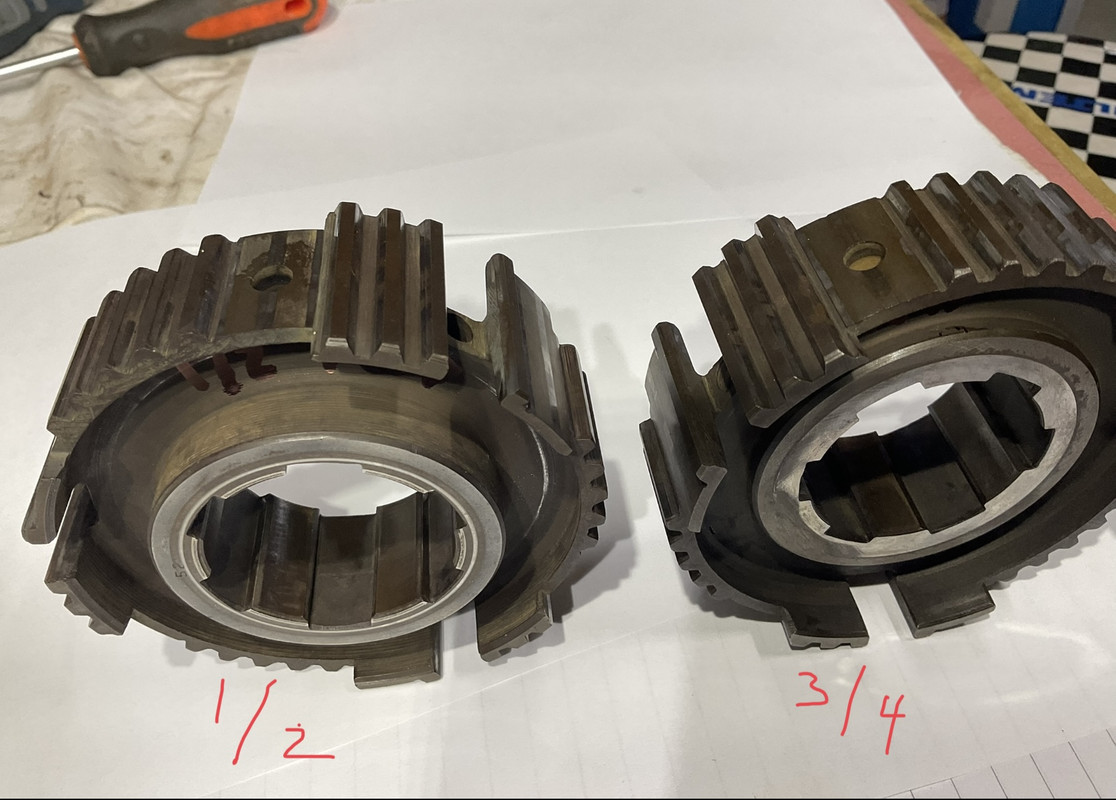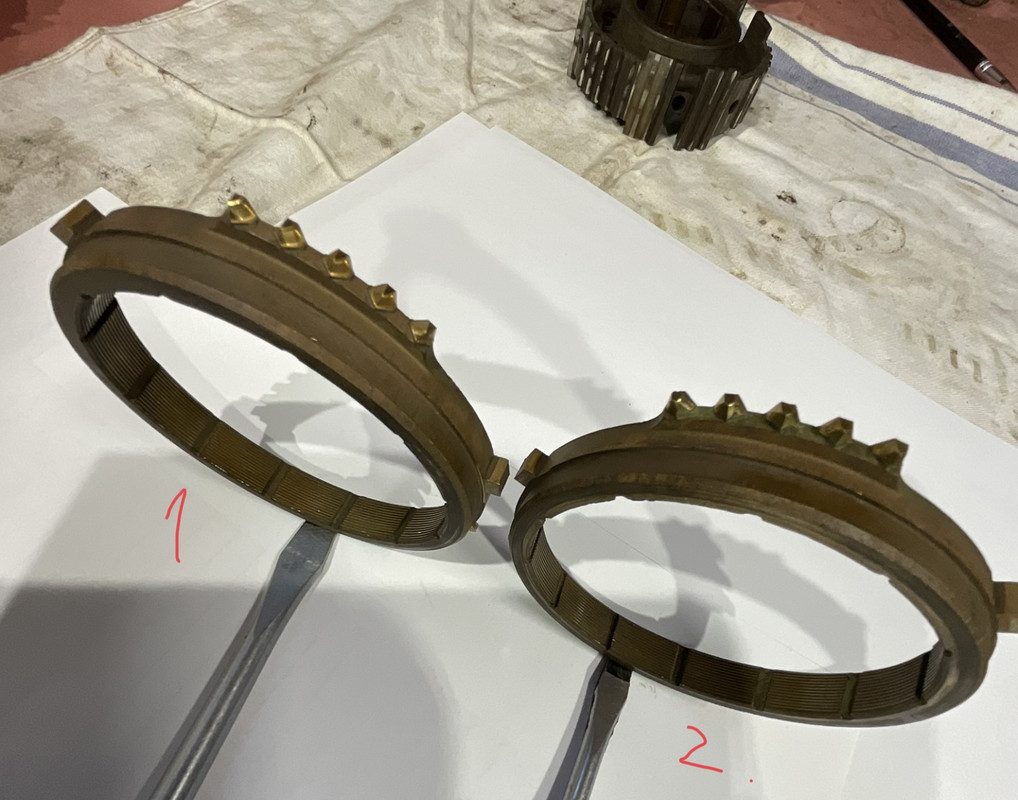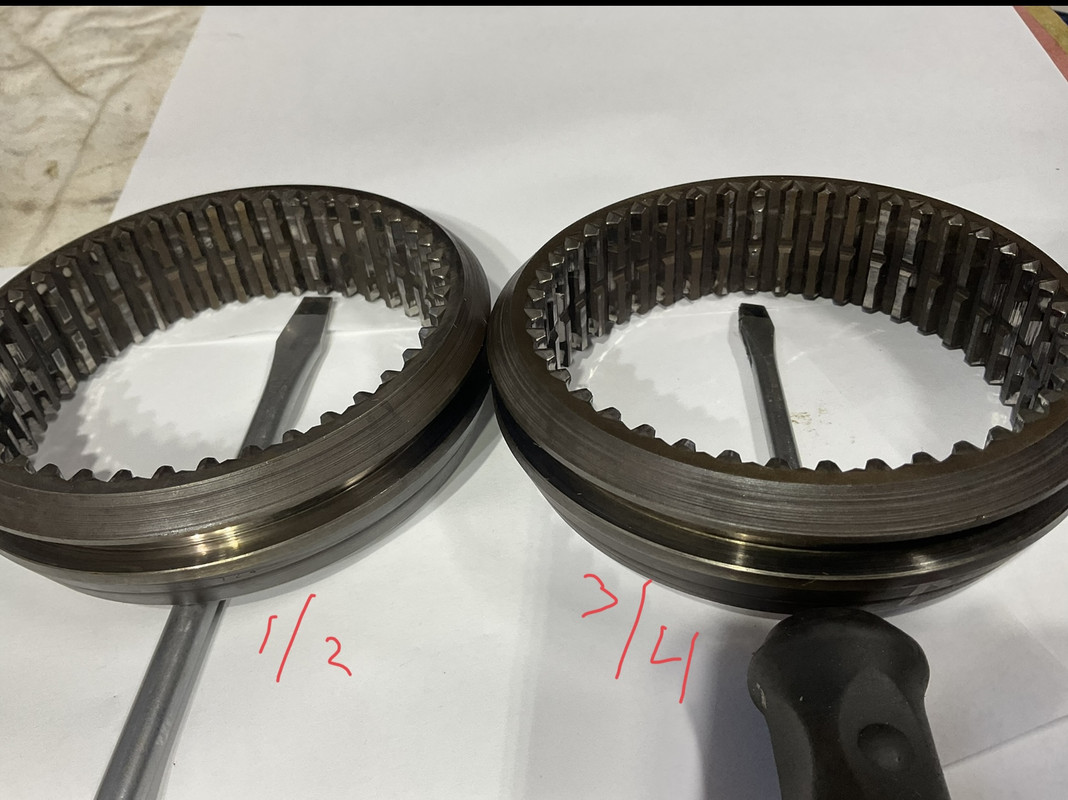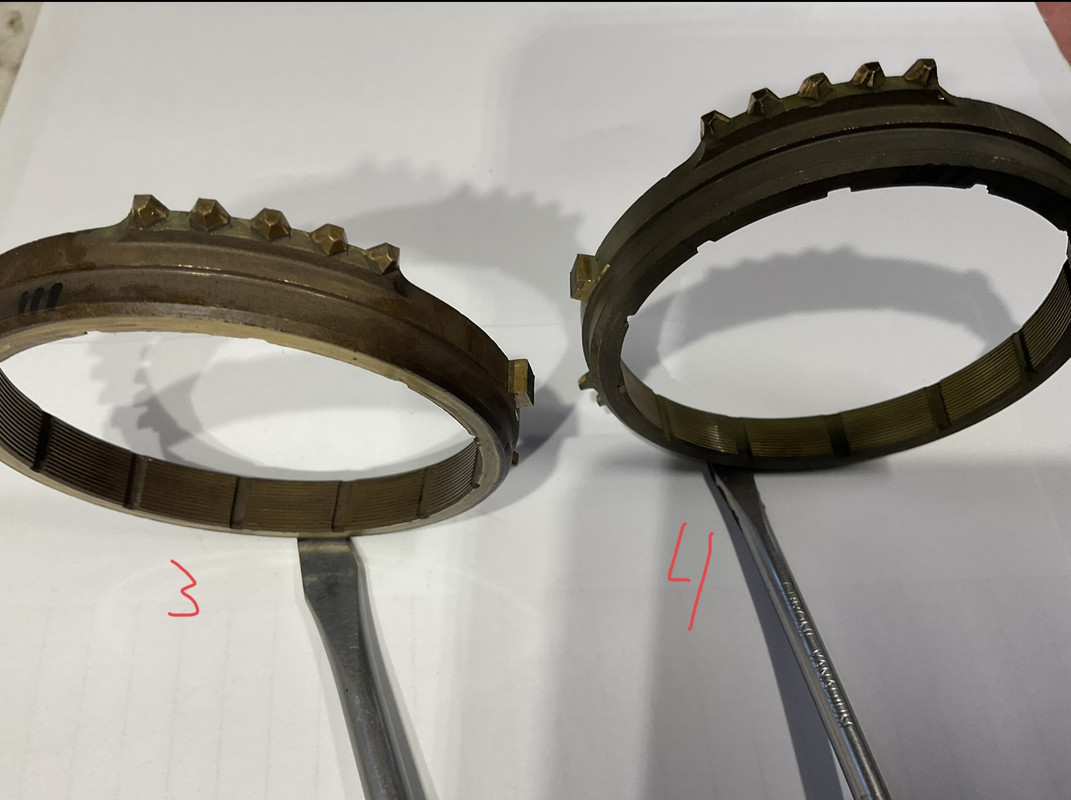Hello Harald,9: fine, but after 16mm forward movement it will foul countershaft.
I cant see that countershaft can be moved more out of the way, and looks very much like drawing in service manual.
10: Is rear bearing supposed to be removed when mainshaft is only moved 16mm forward? Is it a loose fit?
And just to be sure, reverse lever pulled rearward / reverse disengaged?
Its hard to see from your picture if you have the cutout of the 3rd/4th synchro in the correct position to not foul with the Lay CLuster. Its a case of moving the Main Shaft Assembly forward relative to the rear bearing. The rear bearing must be removed to be able to remove the Main Shaft Assembly from the Gearbox Housing.
Once you have removed the Rear Bearing, as per the book, secure a hose clamp on the Main Shaft, just to the rear of Reverse Gear, with Reverse Gear pushed forward, snug up against the other assembled parts of the Main Shaft. If you don't get Reverse Gear as far forward on the Main Shaft as possible, you will struggle to remove the assembly out through the top of the Gearbox Housing.
The Reverse Idler Gear normally doesn't present much of a problem. If its in mesh with the Reverse Gear, Reverse Gear will simply slide axially through the Reverse Idler gear. However, by moving the Reverse Gear Selector Lever to the rear will move the Reverse Idler Gear forward out of the way.
When you removed the Lay Shaft and allowed the Lay Shaft Cluster to drop to the bottom of the Gearbox Housing, did you ensure that the Rear Thrust Washer fell the correct way? If not, Reverse Gear may foul with it and wont allow Reverse Gear to be kept pushed up in contact with the remainder of the Main Shaft Assembly.
Regards,
Bill





